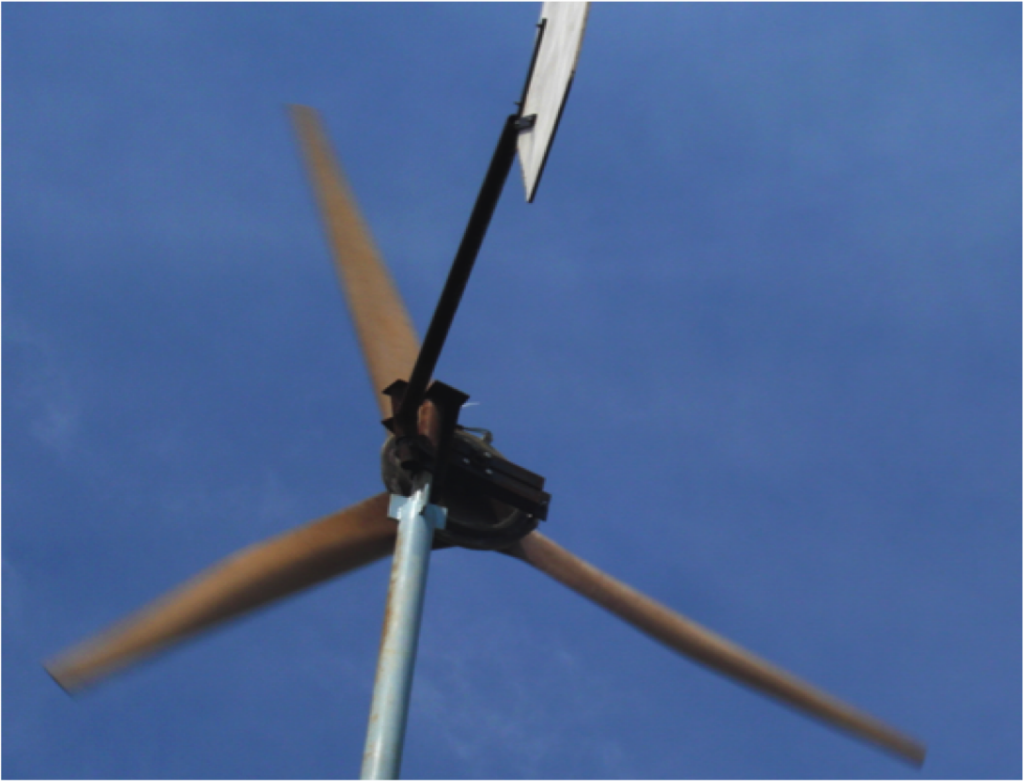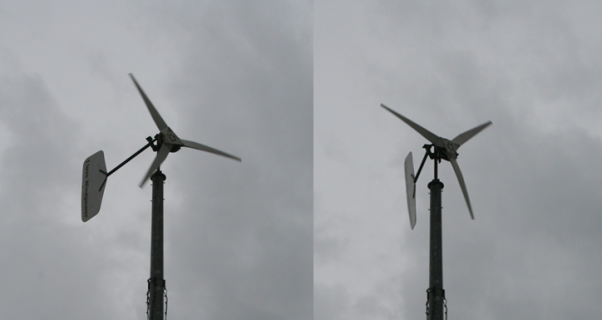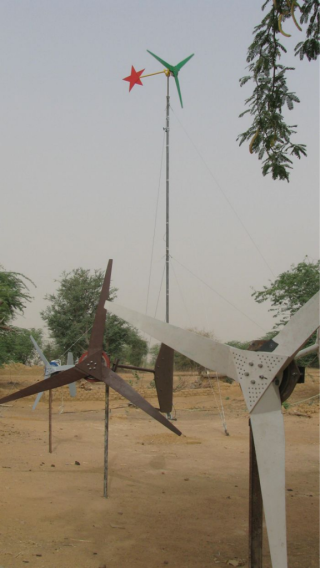The Hugh Piggott wind turbine is a horizontal axis wind turbine (HAWT) with permanent magnets on a rotor disc driven by three blades.

The turbine is made from simple materials and by simple tools. It consists of a rear hub of a car, a self made generator with self wound copper coils, a frame made from some metal angles and pipes and three wooden blades that can be shaped easily with a saw, chisel and planer. The magnets induce a voltage in the electrical coils in the stator through an axial flux configuration. This alternating current (AC) is then converted to direct current (DC) by a set of diodes to charge batteries.
A tail vane keeps the blades facing in the direction of the wind to ensure optimal capture of the wind. Starting from a wind speed of about 10 m/s, the tail will start hinging at the frame in the direction of the blades, thereby yawing the turbine out of the wind. This prevents the blades from getting a higher velocity, and thereby protects the wind turbine from mechanical failure in extreme environmental conditions. The pictures below show the furling of the tail:

When the batteries are fully charged, a simple electronic load controller diverts the electrical power to dump loads thereby protecting the batteries from getting overcharged. In case of emergency, any operator can easily stop the turbine by applying an electro-mechanical break using a short-circuit switch.
Model: Scoraig Wind (open source)
Designer: Hugh Piggott
Type: Horizontal axis wind turbine
Main components
Generator: Permanent magnet axial flux generator
Blades: Three fixed pitch, wood, stall regulated
Vane: Passive furling system
Operating range
Cut-in wind speed: 3 m/s
Rated wind speed: 10 m/s
Brake type: Short circuit three phases of generator
Available types
Battery charging: 12, 24, 48 V
Grid connection: 110, 220 V
Typical rotor dimensions: 1.8, 3.0, 4.2 m
Peak power: 500 W, 1 kW, 2.5 kW
Rated power: 350 W, 800 W, 2 kW
Typical hub heights: 6-24 m
Performance of different turbines is measured on the test field for small wind turbines in Schoondijke, Netherlands:
| Name | Turbine specification | Performance test |
| ILWP 2,4 | 2400 mm rotor diameter, 48 V generator | Testing ILWP 2,4 |
| ILWP 1,8 | 1800 mm rotor diameter, 48 V generator | Testing ILWP 1,8 |

